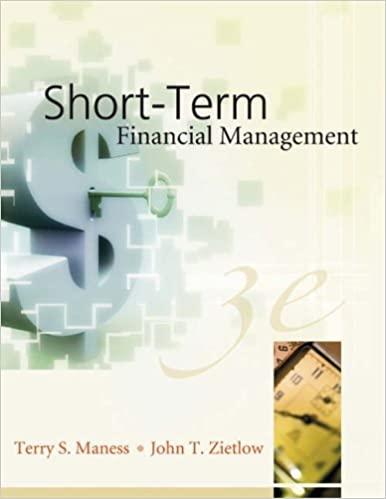Question
Question Variable - Parameter Coefficients Standard Errors t-Statistics Intercept - 1.5237 0.6321 2.4108 (Mkt-RF)t - 1.1462 0.1450 7.9023 SMBt - SMB 0.3164 0.2107 1.5015 HMLt
Question Variable - Parameter Coefficients Standard Errors t-Statistics Intercept - 1.5237 0.6321 2.4108 (Mkt-RF)t - 1.1462 0.1450 7.9023 SMBt - SMB 0.3164 0.2107 1.5015 HMLt - HML -0.8347 0.2236 -3.7323 Adjusted R2 0.2557 F-ratio 39.7390 Number of observations 351 Durbin-Watson 1.8941 a) Interpret the model from a financial perspective. That is, what are these four estimated coefficients telling you about Apples systematic stock market performance? Does each make theoretical and intuitive sense? Explain your answers. (Note that a non-zero intercept (alpha ()) denotes the presence of arbitrage opportunities.) b) Comment briefly on the statistical significance of the intercept and each of the independent variables as indicated by their t-ratios and on the statistical significance of the model as a whole as indicated by the F-ratio. What is the interpretation of R2? Running this regression model results in a beta () value of 1.3596, an R2 of 0.2106 and an F-ratio of 93.1237. 1) Has there been any appreciable gain in predictive power with the three factor model? (In other words, did the three factor model do a better job than CAPM of predicting Apples stock price?) 2) Conduct a t-test on the null hypothesis that beta () truly equals 1.3596 given the above estimate of 1.1462 and its standard error of 0.1450. (This is basically asking whether or not the Beta estimated by each model are statistically different from one another.) 3) Finally, comment on the CAPM intercept term of 1.2041 which is statistically different from zero. What are the financial or practical implications for investors? Variable - Parameter Coefficients Standard Errors t-Statistics Intercept 1.2041 0.6432 1.8720 (Mkt-RF)t 1.3596 0.1409 9.6501 h) For January 2014, the actual value of (Mkt-RF) was minus 3.26% (-3.26), SMB was plus 0.85% (+0.85) and HML was minus 1.83% (-1.83). Given the three factor regression output at the beginning of this document and the actual January values for the variables here, what does the model predict for Apples excess return (RAAPL-RF) in January? How does that compare to the actual value for (RAAPL-RF) which was minus 10.77% (-10.77) for January 2014? Is the difference statistically significant?
Step by Step Solution
There are 3 Steps involved in it
Step: 1

Get Instant Access to Expert-Tailored Solutions
See step-by-step solutions with expert insights and AI powered tools for academic success
Step: 2

Step: 3

Ace Your Homework with AI
Get the answers you need in no time with our AI-driven, step-by-step assistance
Get Started


